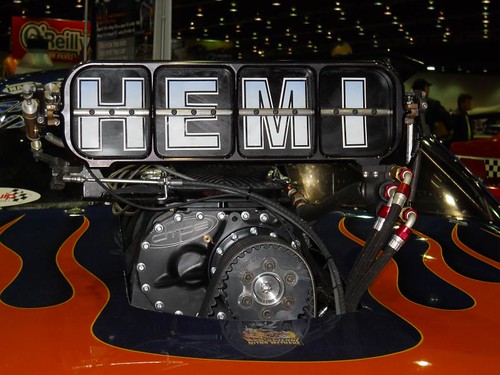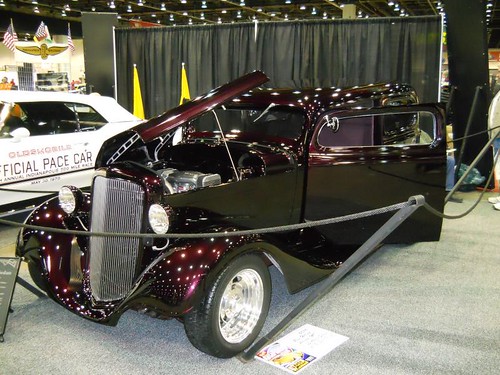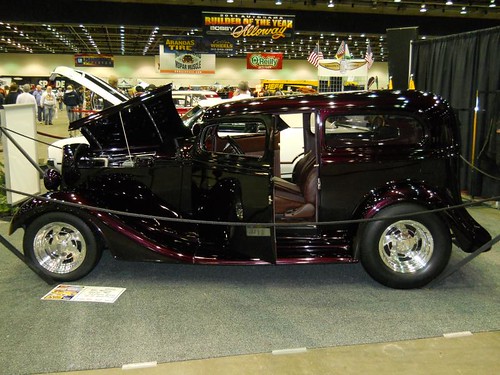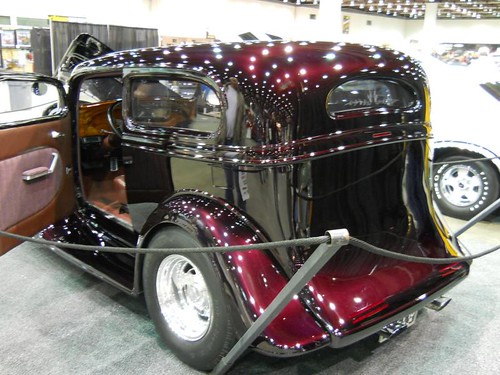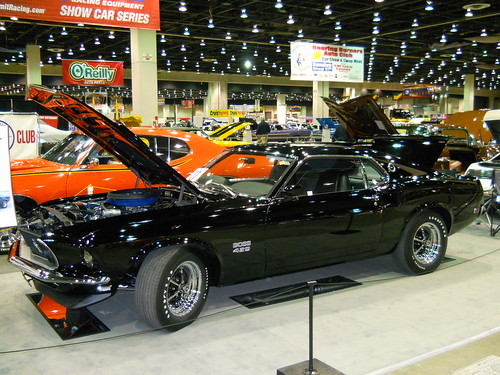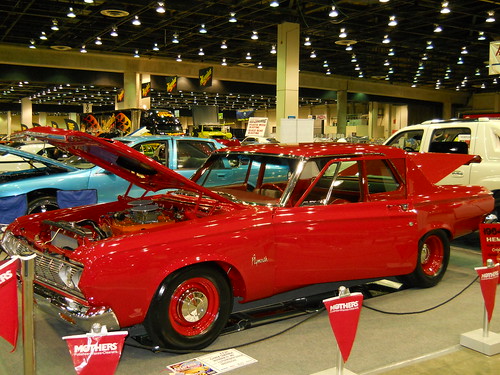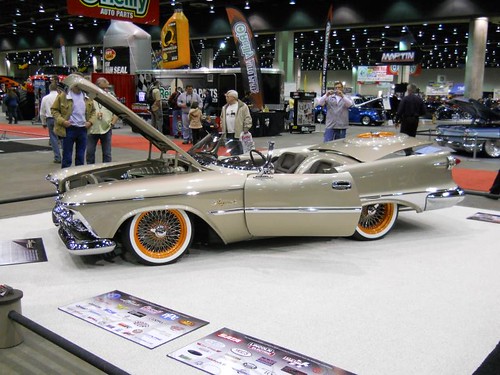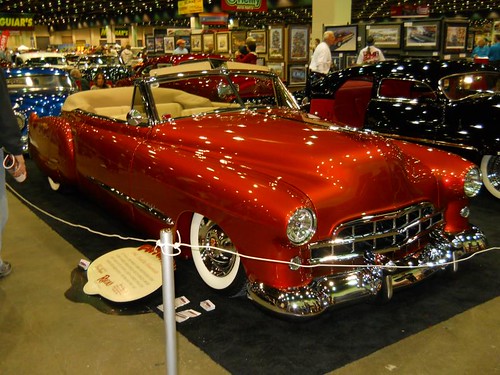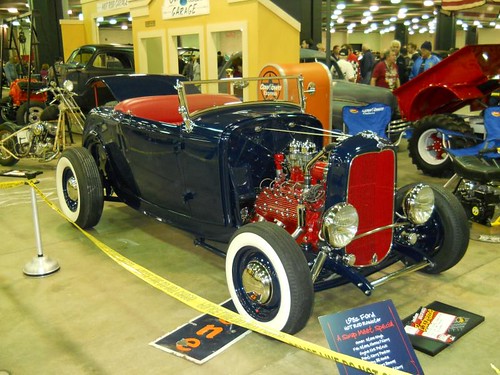
Tuesday, March 29, 2011
2011 Super Snake vs 427 Cobra - Baddest Shelby Ever
Hawk's 1989 Firebird w/Magnacharged LS1
Did I "Freiburger" my Camaro?
As friends and long time readers know, my first car, a 305 powered 1989 Firebird, was totaled when a driver failed to stop at a stop sign. So, I can't vouch that I still own my first car, as Freiburger can with his 1970 Mopar. In my defense, I've owned my Camaro since 1996 (when I was 19), and later on down the road bought another 1989 Pontiac that was a step up. The replacement Bird wears the same Maui blue, is the Formula edition, and other than that is nearly an exact replacement. The only downside is as most F-body entusiasts know, you can't get a 5 speed with a 350, and I went for cubic inches this time around, though sadly miss bangin' gears from my first car.
Over the years, my Camaro has been used for many duties. Initially, it was my daily driver...when I didn't have it torn apart. I drove it back and forth to work while home from college. At college, I used it to commute back and forth to class. It was at college that I was labeled the "SuperSport" title, after learning of my somewhat unappreciated 7 am wake up calls when I attempted numerous times to first up my choke-lacking 350, and later, also choke lacking 454.
What led me to where I am today with the car is hard to pin point, as I feel there were multiple influences that forced my hand. First, I had a lot of friends back home, that with each passing year, built an even faster car. Secondly, I think seeing somebody's badass/over the top car at a car show or cruise night played it's own role. A nicely built car with a top notch paint job really turns heads, though you pass by with a beat up/bondo machine with a built engine with a rumble that girates your inner organs, and you won't take a second look at that show queen that passed by prior. Lastly, I think there is something inside of me, a little voice, that told me that a vintage muscle car needs a certain type of engine, and one that pushes the envelope in terms of streetability.
Freiburger stated that where he made his mistake building his 484 Hemi back in the 1990's was that the car wasn't fast enough to compete with the Fastest Street Car competitions, and it was too radical to be considered a street car. These days, I'm taking a step back, wondering, did I go too far? With nearly a nearly .700 lift solid roller, a 4,200 stall speed, and just shy of 6 mpg, will I end up regretting what I built? Will my Camaro end up a race car, trailered to and from the track? I honestly can't answer that question at this point, though considering this summer will be the first full summer in which the car is up and ready to go, I'll better be able to answer that question by next fall.
I suppose I'm lucky in a way, because as radical as my car is, there are approximately 70 car shows/cruises any given week in metro Detroit. Perhaps the maximum 30-45 minute commutes will be the saving grace, and keep the car just enjoyable enough, or should I say tolerable enough. I'm still a rebuilt or replaced rear end away from making it to the race track, but in my opinion, the low 10 seconds on the motor, with mid to low 9's on the NOS, are just where I wanna be. For me, they are by far the most fun cars to watch at the track. Wheels in the air/violent launches are way more enjoyable than the flat/controlled launches typical of most 7-8 second cars. Only time will tell how happy or unhappy I will be with this build. If I were a betting man though, I'd lay my money down on any future engines displacing more cubic inches, and putting down even more power.
My first car reincarnated, has served me well, earned it's keep, and deserving of it's own restoration and modification. I've pondered supercharged, turbo, and twin turbo options...though I think perhaps a nicely built all aluminum LS motor, naturally aspirated, backed by a 6 speed, would give me the road trip car I'm looking for deep down inside. Stay tuned, as in the coming months I'll be heading down to my parents to knock the dust of my Camaro, preparing it for cruise season. Massive burnouts will follow, and now armed with an HD video camaro, documentation will go beyond still shots!
Hot Rod Magazine Crusher Camaro Road Trip
I really don't know how it would do on a 1,000 mile road trip, but just as the Crusher Camaro, I'm sure I would need plenty of tools, as headaches would surely arise. In the end, you can't help but hold the utmost respect for the guys cruising down the highway in a gasoline chuggin' beast of a car, and the Crusher Camaro fits the bill.
Monday, March 28, 2011
Small/Fuel Efficient Car Sales Down. Surprised?
The more pressing issues is the governement requirement for car companies to meet the standard of 35.5 mpg average by 2016. That is a pretty drastic increase in just a few years, and you can't sell people what they don't want. An underlying problem as to why the mpg average hasn't increased greater than it has is due to vehicle weight. With most full size cars tipping the scales 4,000+ lbs, it's no wonder they get the mpg they do.
If you were to take today's powertrains, drop them into cars built 15-20 years ago, you'd probably already meet the 35.5 mpg requirement. Cars have become fat pigs, with too many technological luxuries. Something is going to have to give, and I think it's the government that is going to have to budge. You can't force people to buy something they don't want, and you can't hold a company accountable for producing a product that sells.
The article from the Detroit Free Press:
Automakers are spending more than $50 billion to meet the government's 2016 fuel economy law, but consumers aren't buying enough of the fuel-efficient vehicles necessary to allow automakers to achieve the required 35.5 miles-per-gallon average.
Despite rising gas prices and new electric cars and hybrids, the fuel economy of Americans' new vehicles stagnated last year.
The 2010 average of all new vehicles actually slipped to 22.2 m.p.g. from 22.3 m.p.g., according to a report from Ward's Automotive Reports that examined calendar-year sales.
With unleaded regular gasoline now averaging $3.56 a gallon nationally -- up from a 2010 average of $2.84 -- car buyers are thinking more about fuel economy than they were last year. But replacing a large vehicle with a smaller one is farther than many buyers are going.
Hybrid car sales actually shrunk from 2.9% of new vehicle sales in 2009 to 2.4% last year. Sales of light trucks -- pickups, SUVs, crossovers and minivans -- rose to 51% from 48% over the same period.
Said Gloria Bergquist, vice president of the Alliance of Automobile Manufacturers: "For consumers to really change their buying habits, they must believe higher gas prices are a long-term change, and by long-term, they mean five years or more."
If automakers don't meet the standard four years from now, they could face fines if the law is not rewritten.
American still favor larger vehicles
There are now 160 models on the market that get 30 or more miles per gallon. Plug-in vehicles such as the Chevrolet Volt and Nissan Leaf now are available, as are 25 gasoline-electric hybrids. Even more are on the way as automakers rush to hit the most aggressive fuel-economy requirements since the government began regulating efficiency in the mid-1970s.
Yet, even as unleaded regular approaches $4 a gallon, consumer acceptance of high-mileage technology has been lukewarm at best.
In the first two months of the year, Chevrolet sold 602 Volts while Nissan sold 154 Leafs. In the same period, by contrast, Cadillac sold 2,793 Escalades and Lincoln sold 1,193 Navigators.
"Consumers are the wild card," said Gloria Bergquist, vice president of the Alliance of Automobile Manufacturers. "Americans have mostly chosen to buy larger vehicles. Crossovers accounted for 2.9 million sales last year, compared to 2 million for subcompacts and compacts together."
Still, the new standards have automakers under pressure to make sure each redesigned model is considerably more efficient than the one it replaces. The 2011 Ford Explorer with a 2.0-liter 4-cylinder engine gets 18 m.p.g. in city driving and 26 m.p.g. on the highway. The 2010 Explorer with a 4.0-liter V6 was rated at 14/20 m.p.g.
But if everyone buys a leaner version of the same vehicle being replaced, that won't be enough for automakers to meet the government's average fuel economy standard of 35.5 m.p.g. by 2016 -- unless they're selling mostly passenger cars and large volumes of hybrids, for which manufacturers earn CAFE (corporate average fuel economy) credits.
The U.S. Environmental Protection Agency found that the industrywide average last year improved slightly to 22.5 from 22.4 m.p.g. based on automakers' projection of 2010 model-year sales.
"We studied the 1970s and we looked back at the last couple of oil crises, and we found that the American consumer will buy small, more fuel-efficient cars for literally three to four months," said Rebecca Lindland of IHS Automotive. "And then three or four months later, we go right back to buying big cars."
She has concluded: "The change in consumer buying behavior toward better fuel economy is not aggressive enough to meet the 35.5 m.p.g. standard."
There are exceptions. Sales of Toyota Prius are up 47% this year through the end of February. Volkswagen is seeing sharp increases in the sale of its Jetta and Golf clean diesel models. But diesels, which account for 48% of new-car sales in Europe, make up less than 1% of all U.S. sales.
"Automakers have to work harder advertising their best mileage models," said Mark Cooper, director of research at the Consumer Federation of America. "And they're going to have to work harder to improve the mileage of vehicles consumers want."
General Motors touts its 12 models that get 30 m.p.g. or better on the highway. Ford is promoting its "Four over 40 (MPG)" -- Fiesta, Focus and hybrid versions of the Fusion and Lincoln MKZ.
"Our plan is to have the best fuel economy across the entire range of products," said Ford spokeswoman Christin Baker. "To some degree the buying habits are going to be driven by a variety of needs beyond fuel economy."
Based on EPA data, the adjusted fuel economy performance of manufacturers selling in the U.S. last year ranged from a high of 25.9 m.p.g. for Hyundai to Chrysler's 19.2. Credits for flex-fuel, compressed natural gas, hybrids and electric vehicles raise those numbers by at least 25% for the sake of meeting CAFE standards. For 2011, each manufacturer is required to reach an average of 30.2 m.p.g. for passenger cars and 24.1 for light trucks.
Although industry leaders are skeptical about the Obama administration's proposal to raise the requirement as high as 60 m.p.g. by 2025, they remain committed to hitting the 35.5 target.
"There's been a fundamental change in the industry's thinking," said AAM's Bergquist. "We looked at the world and we see a very precarious energy situation, and we would like this country to have a comprehensive energy plan looking forward."
Contact Greg Gardner: 313-222-8762 or ggardner99@freepress.com
Sales of fuel-efficient autos stall despite high gas prices
Thursday, March 24, 2011
Central Michigan University Ends Automotive Technology Program
When I arrived at CMU's summer orientation in 1995, I really had no idea what I wanted to major in, or even what CMU had to offer. Fresh out of high school, I was still stumbling through life clueless. Having developed a deep passion for cars over the last few years, when I discovered CMU offered an Industrial Technology degree with an Automotive concentration, I found my path.
Not only did I find a program perfect for me, I discovered others who shared my passion. Growing up, mom and pop automotive shops, as well as performance shops (Super Shops 1963-1997), were coming to the end of the road. With the AutoZones, Murray's, and Advanced Autos taking over, getting a car part entailed talking to somebody punching your info into a computer, not understanding that it didn't matter what year the vehicle was, as nothing was original, and all you needed was a set of gaskets for a small block Chevy. With the loss of these shops, many of us gearheads lost our places to hang out. For me, the shop at CMU took on that role.
Within a short time, I was employed as a shop assistant, as were many of my closest friends at CMU. The knowledge we learned, projects we tackled, and stories we have will last a lifetime. We were downright spoiled in regards to what we had at our fingertips. A hot tank, lifts/drive up hoists, bench dyno, flow bench, crankshaft balancer, valve grinder, and an endless supply of tools. It was truly a gearheads paradise.
If not for the Industrial Technology program, and most specifically the Automotive shop, I'm not sure whether or not college would have been for me. In one sense, we were somewhat of the castoffs, or even the "greasers" of our era. We'd come back from a day at class, or evening during open shop, covered in dirt, grime, and grease from head to toe...loving every minute of it.
I have to this day, so many memories tucked away from those days and nights in the shop. Much of my 69 Camaro was built in that very garage, and while I have made some changes, it all started in that garage.
Perhaps the most memorable for me was my final year at CMU. I had rebuilt my Camaro from the ground up, and the finishing touch was a 513 hp 454 Big Block Chevy. After the build, I was tuning the engine on our SF901 Dyno. Occasionally, the exhaust tubes would fall off the headers during a 7,000 rpm pull. The noise was music to my ears, though to others working in other classrooms throughout the building, it was a reason for curiousity. More than a few people came wandering into the lab to see what all the commotion was about.
When I got news from my former professor that with his retirement, the university had decided to end the program, I was a bit hurt. I had this sinking feeling inside, and a heavy heart. I had always hoped to some day go back and stop into the lab, perhaps even see what the students of today were working on. Those days are over, and along with many of the mom & pop automotive shops, and performance shops, are now part of a bygone era. I am just thankful for the times I had, the friends I met, and knowledge I took away. While I won't be able to revisit the garage, I do hope to one day meet up with some of my friends and my former professor, with his Shelby Cobra he had talked about building all those years, and finally is becoming a reality.
With that, I leave you with a short article that was printed in the college paper at CMU, just prior to Mr DeKryger's retirement.
Automotive Technology Professor Leaving Behind Legacy.
G Force Crossmembers
G Force Crossmembers
Monday, March 21, 2011
Hot Rod Calculator

Quick Overview
-Pre-programmed formulas for engine building and track tuning
Hand held, take it anywhere.
-On the spot calculations of how engine modifications effect the vehicle setup.
-The Hot Rod Calculator allows easy, on the spot, calculations of how engine modifications and at track vehicle setup changes can effect power output and track performance.
-Easy to use formulas for the professional or novice will show you how engine changes like compression ratio and air fuel mixture effect your engine's power and torque outputs.
-At the track, see how things like gear ratio changes or weather conditions can effect your E.T. (accurate weather data required).
Hot Rod Calculator - Street and Strip performance calculator for use by racers, engine builders and automotive enthusiasts. This is the chance to know up front how changes will translate into power and performance, so before you spend your time or money, use the Hot Rod Calc to get the answers. Pre-programmed formulas for engine building and track tuning. Quick reference guide with 100s of formulas included for ease of use. Easy to use, self contained, no additional computer or monitors required (accurate weather data required for some ET calculations) Hand held, take it anywhere, and includes protective Armadillo case at no additional charge. Universal for or use to do any mathematical calculations related to engine performance and vehicle E.T
Available at Summit Racing for $80.99
Ford Boss Mustang TracKey
DEARBORN, Mich., Nov. 11, 2010 – You hold two keys: One has a black Boss logo, the other red: Either will start your 2012 Mustang Boss 302. Slide the all-black key into the lock cylinder, give it a twist and you’re treated to 444 ponies worth of smooth, streetable driving joy. Or choose red – the TracKey – and you have a competition-ready track car.
2012 MUSTANG BOSS 302 LETS LOOSE WITH TRACKEY; CHOOSE STOCK OR FULL-RACE CALIBRATION
•TracKey, available for 2012 Mustang Boss 302 owners through Ford dealers, adds TracMode powertrain control software to the car for track use, providing full race calibration and two-stage launch control in addition to stock calibration, without compromising factory warranty
•Using a dual-path powertrain control module (PCM), TracKey software is installed after the vehicle is purchased; accessed by a specially programmed vehicle key, new code coexists with stock Boss software, allowing drivers to choose between street or track use simply by selecting a key
•No aftermarket chips or permanent modifications are made when TracKey is used, allowing owners to return to the stock setting by starting the car with a regular key
A joint project between Mustang engineers and Ford Racing, TracKey adds a second set of powertrain control module (PCM) software to a customer’s Mustang Boss 302, activated by a specially programmed vehicle key. When invoked by TracKey, the new TracMode software alters more than 200 engine management parameters, increasing low-end torque and turning the potent but well-mannered stock Boss into a competition-ready track car. Remove TracKey and start Boss with the standard key, and all factory engine settings are restored for a comfortable drive home from the course.
“From an engine management standpoint, we’ve done just about everything possible to give TracKey users a full race car experience,” explains Jeff Seaman, Mustang powertrain engineer. “It’s not for use on the street – for example, the deceleration is set up to preserve the brakes, and the throttle response is very aggressive. A skilled driver on a closed course will really appreciate the benefits.”
As part of the TracKey software package, Ford engineers also devised a two-stage launch control feature similar to that used on the Cobra Jet race car. Using a combination of steering wheel buttons, drivers can set the tach needle to a desired launch rpm. Floor the throttle and the engine will rev to the preset rpm until the clutch is released, helping aid acceleration and vehicle control from a standing start.
One key, hundreds of changes
Devised during an all-night garage brainstorming session among core Mustang team members, TracKey introduces the concept known as the dual-path powertrain control module. The industry-first, patent-pending innovation allows two separate sets of engine management software to exist on a single PCM, selected through the existing SecuriLock® Passive Anti-Theft System (PATS) transceiver found in current production keys.
The TracKey PCM software, installed by an authorized Ford dealer after a customer takes delivery of the car, adjusts variable cam timing, spark maps, engine braking, fuel control and other engine parameters – more than 200 in total – to provide a complete race car calibration. The result is an aggressive, race-bred driving experience all the way down to the lopey idle rumbling through the Boss quad exhaust.
“Anything that could possibly affect all-out performance is deleted from the TracKey calibration,” said Dave Pericak, Mustang chief engineer. “Throttle limiting and torque management – any daily driveability enhancements are removed and replaced with a pure Ford Racing competition calibration.”
When TracKey is removed and the vehicle is started with the standard key, the PCM settings are automatically drawn from the factory Boss 302 instruction set again without any additional modifications needed – a huge advantage over aftermarket tuning chips and ECU reprogramming. The convenience is useful for enthusiasts who want all-out performance at the racetrack but stock driveability for the journey there and back.
An after-hours obsession
In the early stages of TracKey development, a major challenge was the complexity of installing multiple PCM computers and switching between them. However, Ford controls engineers developed a method to choose between two unique sets of software in a single powertrain control module on the Boss 302: The dual-path PCM was born.
“We installed the 302R software on the same PCM that held the stock Boss software,” says Seaman. “Then the controls engineers developed a software system to activate one or the other, depending upon which key was used to start the vehicle. Really, all the parts to make this work existed – the Ford MyKey® system was already using the PATS transceiver to perform specific actions based on the key used to start the car, and the PCM was flexible enough to handle multiple control modules. It was just putting everything together.”
As the project unfolded, the team was driven by the uniqueness of what they were trying to accomplish, and TracKey became an obsession. Considering the compressed time frame in which the technology was developed, motivation was essential to the creation of the finished product.
“We’ve all been really excited about TracKey, so it came together quickly,” explained Pericak. “The concept was first discussed in spring 2009, and here we are 18 months later with a finished, tested, verified product. It’s a perfect example of what can happen when you get a core, cross-functional team willing to contribute 24/7 to bring a great idea to life.”
TracKey powertrain software installation and key programming will be available to 2012 Mustang Boss 302 owners through Ford Racing authorized dealers. Pricing will be announced at a later date.
# # #
About Ford Motor Company
Ford Motor Company, a global automotive industry leader based in Dearborn, Mich., manufactures or distributes automobiles across six continents. With about 163,000 employees and about 70 plants worldwide, the company’s automotive brands include Ford, Lincoln and Mercury, production of which has been announced by the company to be ending in the fourth quarter of 2010. The company provides financial services through Ford Motor Credit Company. For more information regarding Ford’s products, please visit www.ford.com.
Monday, March 14, 2011
Threaded Exhaust Clamps
For more information, check them out at Julianos.
High Performance Silicone Hoses by SamcoSport
For more information, check them out at SamcoSport.
Wednesday, March 09, 2011
Garage Art
Jones Design
Cat's Meow Detroit
Tope's Tiki Hut
Moto Tooner
Not Stock Photography
BangShift.com: The Car Junkie Daily Magazine
Bangshift.com
Fuel Altered Winged Express Passing Burnout!
Sunday, March 06, 2011
Geo Metro Stretched Limo

THIS IS THE MOTOR CITY, THIS IS WHAT WE DO!!!

I'll have to try and get my phone out more often along my day's adventures. While this little gem takes the cake in regards of ANYTHING I've stumbled upon in my life, there are plenty of worthy project cars out there sitting in backyards and alleys, waiting to be saved, or at least stories to be told.
Thursday, March 03, 2011
2011 Hot Rod Power Tour
As luck would have it, it appears Detroit will also be a part of the 2012 Power Tour, as Cobo Hall has also been reserved for a Hot Rod event. I have heard that next year Detroit may actually be the starting point. ,While I didn't exactly build my Camaro for "long haulin'," it will at least be at the final stop of the tour. As for the 2011 Tour stops, see below.
2011 HOT ROD Power Tour Dates & Cities
Saturday June 4, Cocoa Beach, FL Port Canaveral
Sunday June 5, Valdosta, GA South Georgia Motorsports Park
Monday June 6, Montgomery, AL Montgomery Motorsports Park
Tuesday June 7, Nashville, TN LP Field
Wednesday June 8, Indianapolis, IN Indianapolis Motor Speedway
Thursday June 9, Muskegon, MI Downtown Muskegon
Friday June 10, Detroit, MI Metro Beach Metropark
Saturday June 11, Detroit, MI Long Haulers Ceremony (Location TBD)
Get all the Power Tour updates by texting "HRPT" to "59925."
2011 Hot Rod Power Tour
Tuesday, March 01, 2011
2011 Detroit Autorama Pictures
Upon returning from family leave, I was informed by my Sgt that I was submitted to work the Autorama. Directing traffic and roaming the floor would be my primary duties. First, I was excited, then, concerned whether or not I'd be able to enjoy the show. I figured I'd at least give it a shot. In addition to working the 3 days, I hit the show Saturday morning for my walk through and photo session. In the future, I think I'll stick to simply attending the show on my own time, as walking around for 8 hrs with a 30 lb duty belt and uniform to keep you warm outside, though cooks you while indoors, took away from the enjoyment. As has been the case in previous years, the show was top notch, so without further delay, I'll get to the cars.
I'm going to start off with a car that was built by Rod Calvin, a friend of mine, as well as the guy who painted my Camaro. This car was built for a customer, and is in my opinion, Rod's finest car to date. It seems I wasn't the only one to take notice of that fact, as the owner, Ron, took home 2nd place in the Pre-1935 Altered Sedan class. The pictures can't even begin to show how spectacular the paint is. The color is a candy, which started with black pearl, then had red layered over the top. The body is a fiberglass Outlaw body, which among streetrodders, is considered perhaps they best glass body on the market.
The Legendary Boss 429 Mustang, 1 of 2 that were at the show.
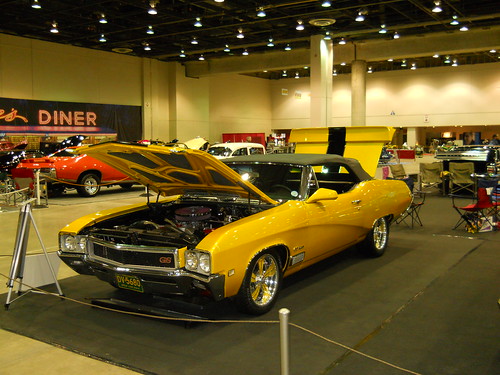
You don't see a lot of Buick GS's on the road, let alone convertibles. This one was a perfect example, and a nice alternative to the many 1970 Chevelles out there.
An early 1960's Mopar, just what the wife wants.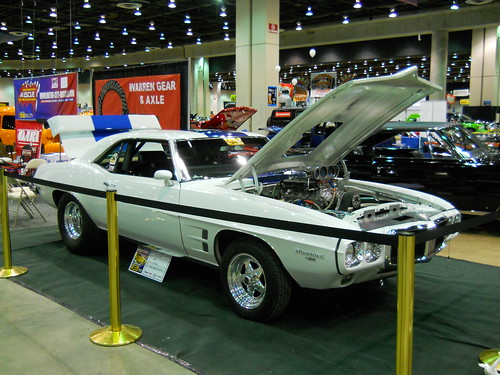
A very nice Firebird!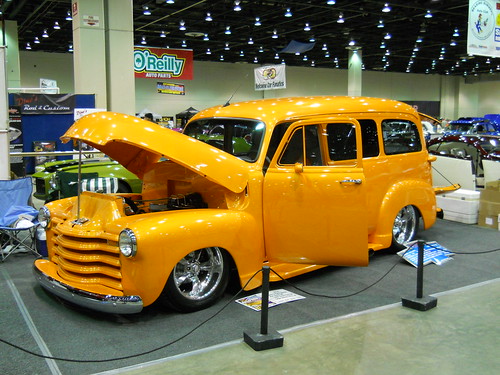
Now THIS is one cool SUV.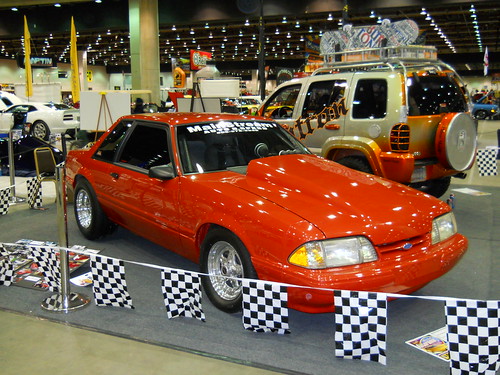
I've always been a fan of the Mustang LX. Labeled "Modern Muscle," in my book, I suppose that applies to anything post-1980, though a few cars such as the 81 Camaro/Firebird may slip past me and still receive the "Muscle Car" label.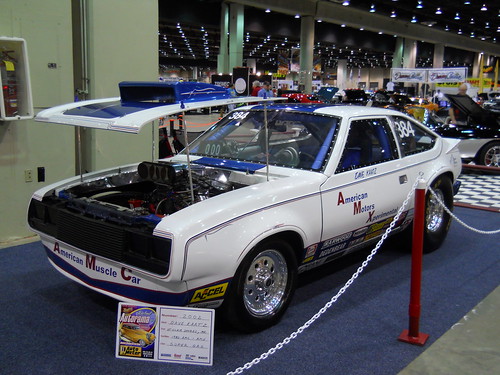
A fair amount of AMC products in the house this year. This was by far the most over the top of them all. The owner claimed low 9 seconds on the AMC 401 alcohol injected engine. I got to hear it fire up as it left the show, all I can say is: Goosebumps.
Ok, I'll admit, this little 6 cylinder with a blower on top poking through the hood of a Toyota Forerunner, which was ruined in most every way imaginable, is still intimidating to say the least. 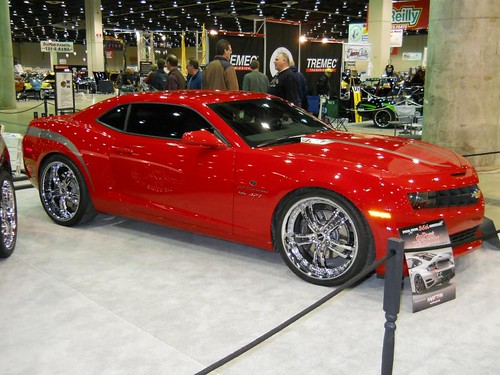
Large amount of new Camaros at the show, and a lot of vendors showing off their modified models, with many in the 750 hp range.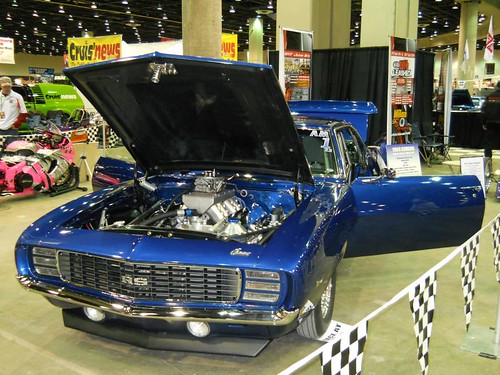
Beautiful blue 69 Camaro with some serious power between the fenders.
Nice flame job.
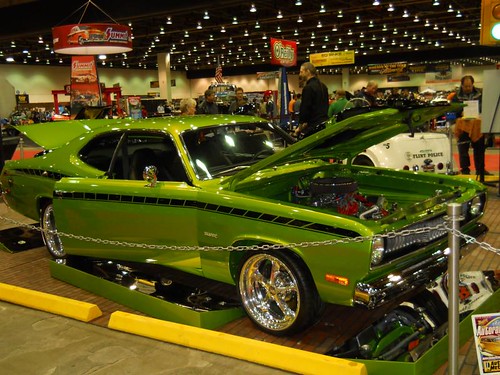
One of the nicest Plymouth Dusters I've ever seen.
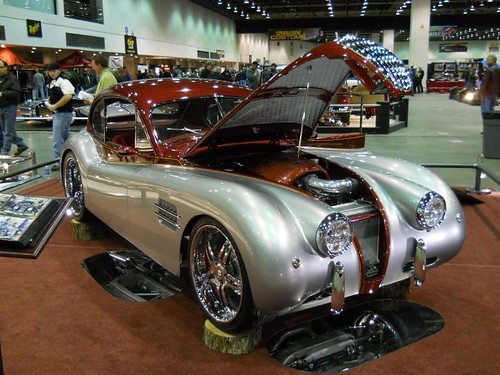
Not often that you see a customized Jag, but this one was sweet as hell.
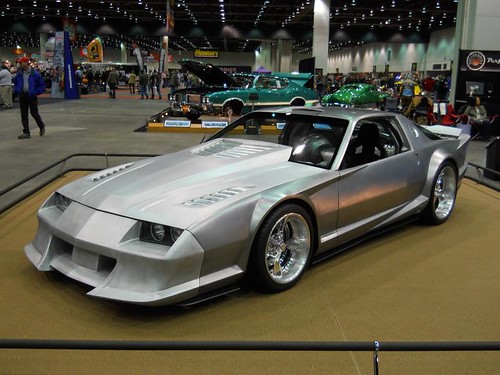
Totally customized 3rd Gen Camaro, modified by Rides by Troy (Troy Trepanier) For more on this car, check it out at Rad Rides: F87 Camaro
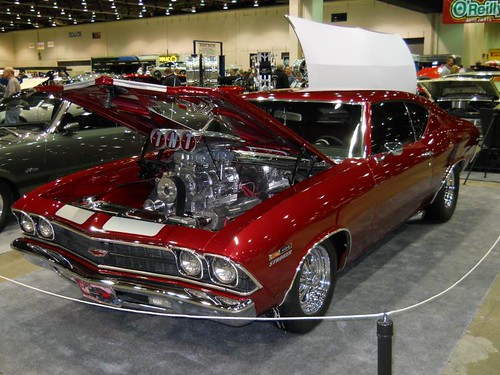
There is no arguing, a blown car is badass!
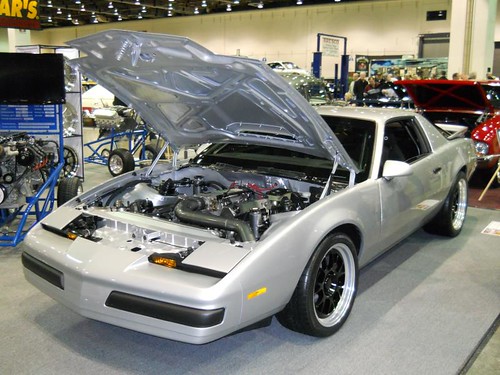
Built by Gordon Rojewski, this is one of the nicest 3rd gen Firebirds I've seen. Under the hood is a turbo charged small block Chevy making 920 hp. Look for an upcoming entry that reviews this ride in greater detail.
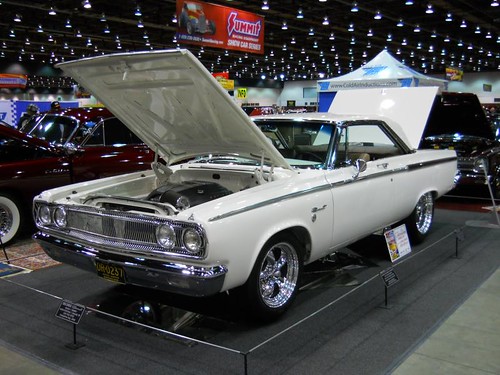
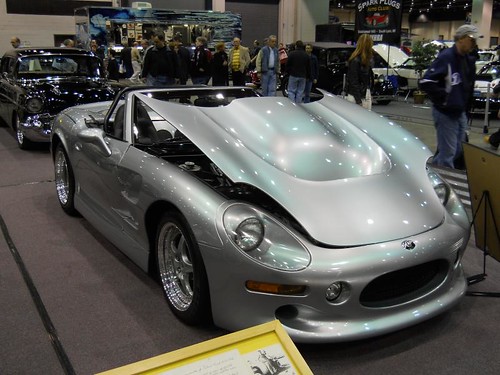
This was a Shelby made a few years ago by the man himself, Carroll Shelby. Though I think production numbers never reached original expectations, this is still an awesome looking car.
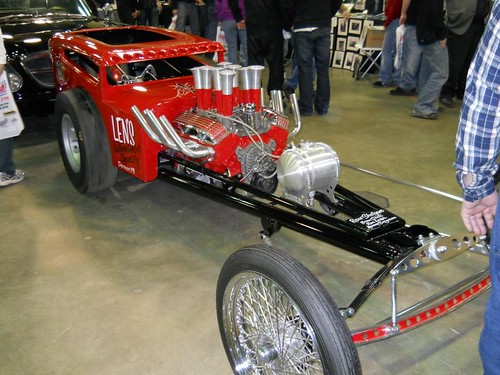
Front Engine Dragster....one of my "Bucket List" cars.
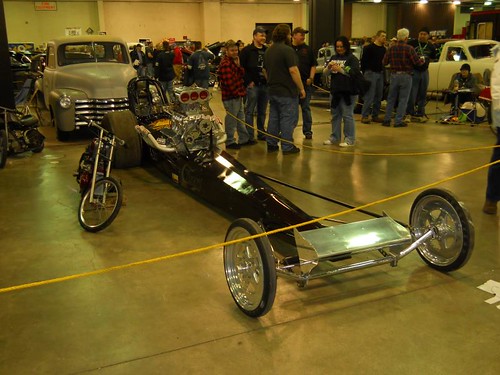
For more pictures from Autorama, click below.
2011 Detroit Autorama Pictures
